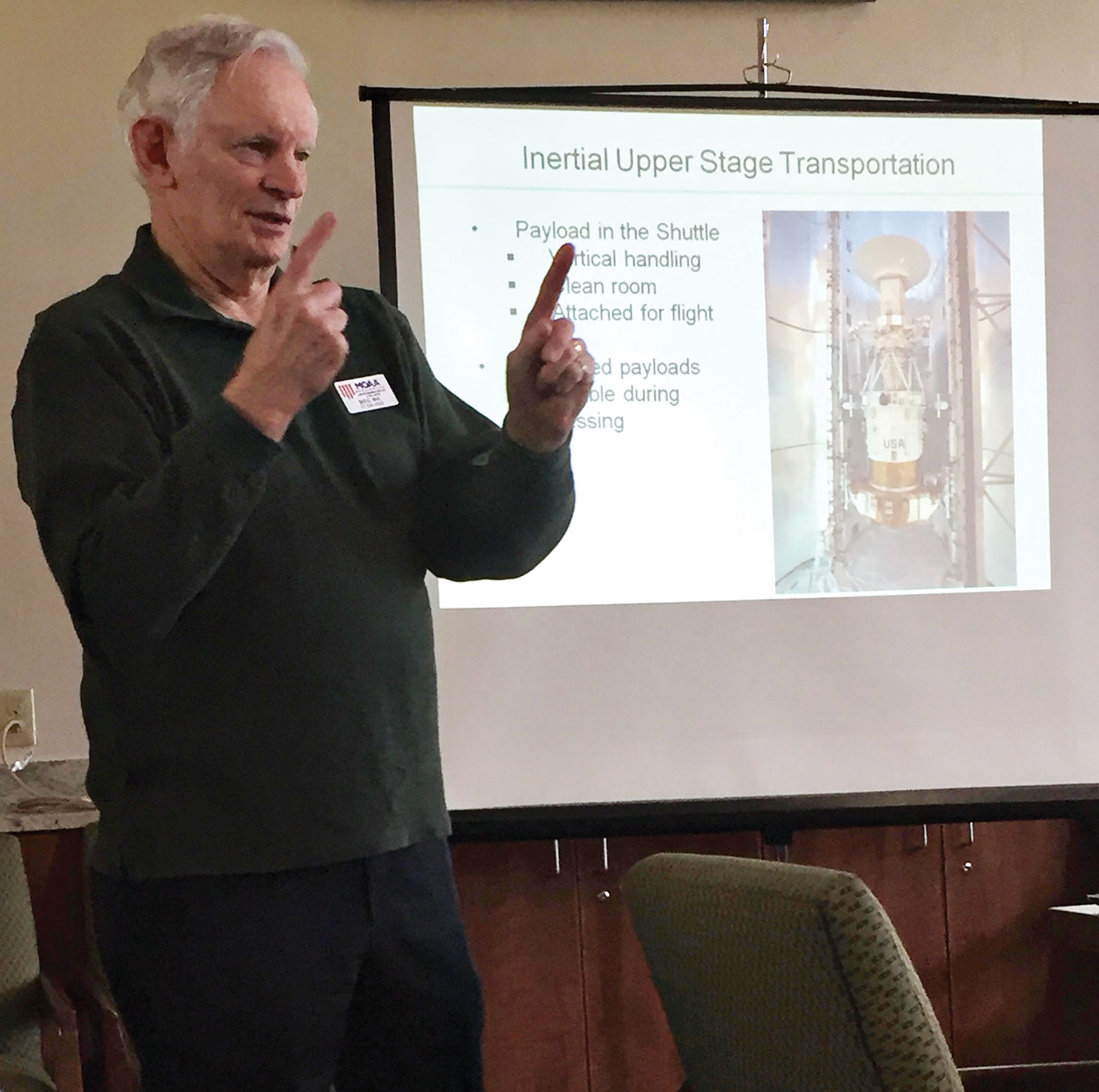 Rett Benedict
Rett Benedict
L/C Doug May, USAF Ret., a SaddleBrooke resident and member of our group, shared his experiences working on the US Space Shuttle while in the Air Force and gave us some insight into potential North Korean missile trajectories that might be used to reach US territory. L/C May had two tours in Vietnam as an F-4 pilot where he was awarded a distinguished flying cross. He also had several AF assignments in the space arena and is currently an adjunct faculty member at the University of Arizona.
The Space Shuttle program was initiated in the mid-1960s, even before the US had landed on the moon. Although it was a NASA program, the AF was part of the team as the AF was very active in military space. The role of the AF was developing the Inertial Upper Stage (IUS) that was used to carry NASA and AF payloads from low earth orbit, where they were released from the Space Shuttle en route to geosynchronous orbit and other trajectories. Typically, the AF spacecraft were for communications and detection of missile launches. These AF missions drove the need for the shuttle to carry payloads of up to 50,000 pounds.
The IUS was a very successful program, both for the AF missions and for NASA interplanetary explorations. The Magellan spacecraft to Venus and the Galileo spacecraft to Jupiter were both boosted by the IUS after release from the Shuttle.
Turning to the potential threat from North Korean missiles, L/C May showed several example trajectories that he computed from tools on the Internet. They included launches from North Korea aimed at Guam, Honolulu and McChord AFB in Washington state. In all cases, the flight paths crossed over Japan. This means that if the US or Japan have the right missile defense capabilities in Japan, such as the US developed THAAD, and the missile can be assessed as a threat in a very short time after launch, there is the potential to destroy the North Korean missile early in its flight. This was very enlightening.
The next Catalina Mountains Chapter of MOAA meeting will be held on Saturday, March 17, 2018, at 11:30 a.m. in the Catalina Room of the Mesquite Grill in the MountainView Country Club Complex, 38759 S. Mountain View Blvd, Tucson, AZ 85739. The speaker will be Willy Halpert, formerly of the Israeli Navy Special Diving Unit. He will be sharing his experiences in the ‘Six Day War’ (June 5-10, 1967).
For additional information, contact Col. Rett Benedict, President, 825-7424, [email protected] or Col. Bill Nagy, MOAA Treasurer, 355-5064, [email protected]. Check website www.tucsonmoaa.com for information.
The Catalina Mountains Satellite is part of the Tucson Chapter and encompasses North West Tucson to include Catalina, Oracle, parts of Oro Valley and Marana, SaddleBrooke, and Sun City.
The Military Officers Association of America (MOAA) is a nonprofit veterans’ service association dedicated to maintaining a strong national defense and to preserve the earned entitlements of members of the uniformed services and their families and survivors.
